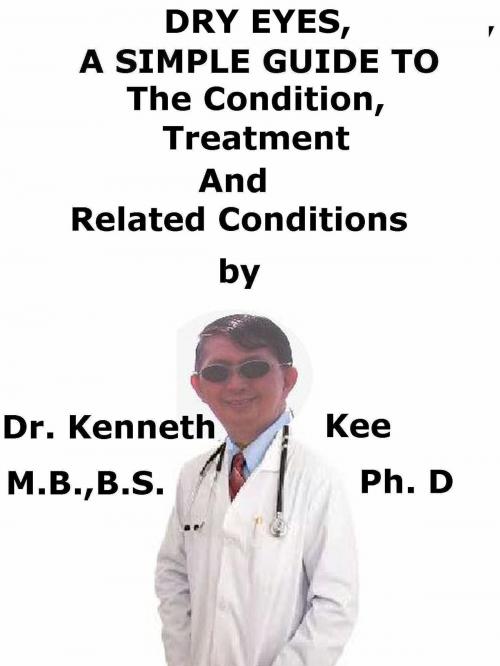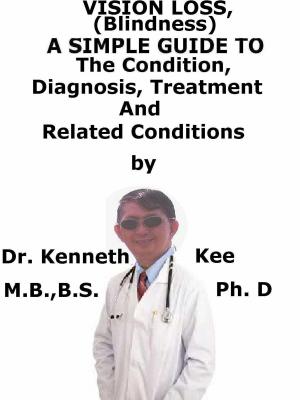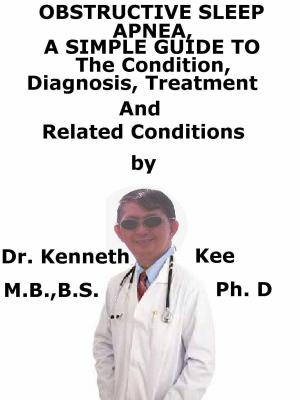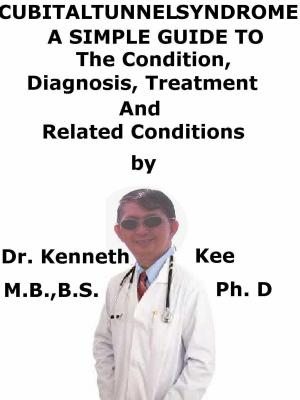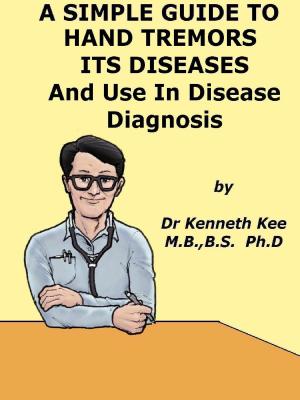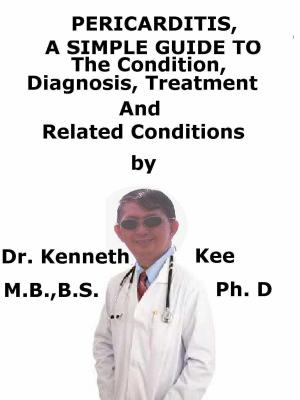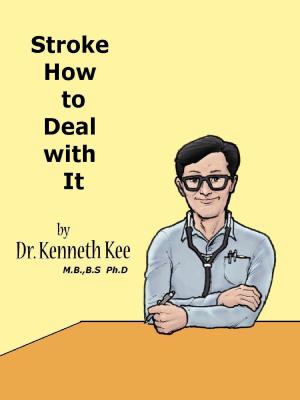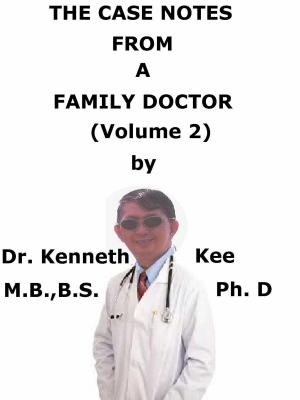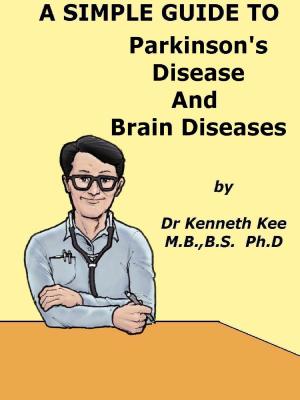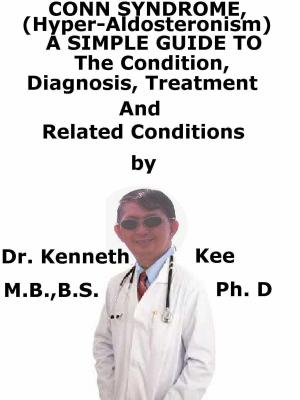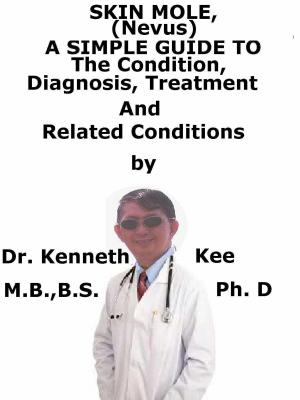Dry Eyes, A Simple Guide To The Condition, Treatment And Related Conditions
Nonfiction, Health & Well Being, Health, Ailments & Diseases, Vision, Medical, Specialties, Ophthalmology| Author: | Kenneth Kee | ISBN: | 9781370606856 |
| Publisher: | Kenneth Kee | Publication: | October 20, 2016 |
| Imprint: | Smashwords Edition | Language: | English |
| Author: | Kenneth Kee |
| ISBN: | 9781370606856 |
| Publisher: | Kenneth Kee |
| Publication: | October 20, 2016 |
| Imprint: | Smashwords Edition |
| Language: | English |
Ode to Dry Eye
Dry eye occurs when there is a problem with the tears
That normally keeps the eye moist and lubricating clear.
Due to age something which we can not prevent
Dry eye may present as blurring of vision
The eye is continuously bathed by a layer of tear
Which keeps the eye wet and the vision clear
The tears protect the eye against infection
And assists in healing of wounds inflammation.
Dry eye occurs when the eye does not produce tears properly
Or when the eye tears evaporate too quickly
And this results in damage of the ocular surface,
Irritation of the eyes or sometimes corneal ulcers.
Dry eye can be managed as an ongoing condition
Cyclosporine is an anti-inflammatory medication
It decreases corneal damage and increases tear production
For severe dry eye short term use of steroid eyedrops decrease inflammation
-An original poem by Kenneth Kee
Dry eye occurs when the eye does not produce tears properly or when the tears are not of the correct consistency and evaporate too quickly and this results in damage of the ocular surface, irritation of the eyes or visual disturbances.
Inflammation of the surface of the eye may occur along with dry eye.
If left untreated this condition can lead to pain, ulcers or scars on the cornea and some loss of vision
However permanent loss of vision from dry eye is uncommon.
Dry eye can make it more difficult to perform some activities such as using a computer or reading for an extended period of time and it can decrease tolerance for dry environments such as the air inside an airplane.
Dry eye can be a side effect of some medications, including antihistamines, nasal decongestants, tranquilizers, certain blood pressure medicines, Parkinson's medications, birth control pills and anti-depressants.
Skin disease on or around the eyelids can result in dry eye.
Diseases of the glands in the eyelids such as meibomian gland dysfunction, can cause dry eye.
Dry eye can occur in women who are pregnant.
Women who are on hormone replacement therapy may experience dry eye symptoms.
Allergies can be associated with dry eye.
Infrequent blinking, associated with staring at computer or video screens, may also lead to dry eye symptoms.
Both excessive and insufficient dosages of vitamins can contribute to dry eye.
Dry eye can be associated with immune system disorders such as Sjogren's syndrome, lupus, and rheumatoid arthritis.
Dry eye symptoms may include any of the following:
1. Stinging or burning of the eye;
2. A sandy or gritty feeling as if something is in the eye
Sometimes a test is done to confirm the diagnosis of dry eyes.
This is called Schirmer's Tear Test.
This measures the amount of tears
Artificial tears, gels, gel inserts, and ointments offer temporary relief and provide an important replacement of naturally produced tears.
The first priority is to determine if a disease is the underlying cause of the dry eye (such as Sjogren's syndrome or lacrimal and meibomian gland dysfunction).
If it is, then the underlying disease needs to be treated.
Cyclosporine an anti-inflammatory medication is the only prescription drug available to treat dry eye.
It decreases corneal damage, increases basic tear production and reduces symptoms of dry eye.
TABLE OF CONTENT
Introduction
Chapter 1 Dry Eyes
Chapter 2 Interesting Facts of Dry Eyes
Chapter 3 Treatment of Dry Eye
Chapter 4 Corneal Ulcers
Chapter 5 Sjogren’s Syndrome
Chapter 6 Meibomian Cyst
Chapter 7 Blepharitis
Epilogue
Ode to Dry Eye
Dry eye occurs when there is a problem with the tears
That normally keeps the eye moist and lubricating clear.
Due to age something which we can not prevent
Dry eye may present as blurring of vision
The eye is continuously bathed by a layer of tear
Which keeps the eye wet and the vision clear
The tears protect the eye against infection
And assists in healing of wounds inflammation.
Dry eye occurs when the eye does not produce tears properly
Or when the eye tears evaporate too quickly
And this results in damage of the ocular surface,
Irritation of the eyes or sometimes corneal ulcers.
Dry eye can be managed as an ongoing condition
Cyclosporine is an anti-inflammatory medication
It decreases corneal damage and increases tear production
For severe dry eye short term use of steroid eyedrops decrease inflammation
-An original poem by Kenneth Kee
Dry eye occurs when the eye does not produce tears properly or when the tears are not of the correct consistency and evaporate too quickly and this results in damage of the ocular surface, irritation of the eyes or visual disturbances.
Inflammation of the surface of the eye may occur along with dry eye.
If left untreated this condition can lead to pain, ulcers or scars on the cornea and some loss of vision
However permanent loss of vision from dry eye is uncommon.
Dry eye can make it more difficult to perform some activities such as using a computer or reading for an extended period of time and it can decrease tolerance for dry environments such as the air inside an airplane.
Dry eye can be a side effect of some medications, including antihistamines, nasal decongestants, tranquilizers, certain blood pressure medicines, Parkinson's medications, birth control pills and anti-depressants.
Skin disease on or around the eyelids can result in dry eye.
Diseases of the glands in the eyelids such as meibomian gland dysfunction, can cause dry eye.
Dry eye can occur in women who are pregnant.
Women who are on hormone replacement therapy may experience dry eye symptoms.
Allergies can be associated with dry eye.
Infrequent blinking, associated with staring at computer or video screens, may also lead to dry eye symptoms.
Both excessive and insufficient dosages of vitamins can contribute to dry eye.
Dry eye can be associated with immune system disorders such as Sjogren's syndrome, lupus, and rheumatoid arthritis.
Dry eye symptoms may include any of the following:
1. Stinging or burning of the eye;
2. A sandy or gritty feeling as if something is in the eye
Sometimes a test is done to confirm the diagnosis of dry eyes.
This is called Schirmer's Tear Test.
This measures the amount of tears
Artificial tears, gels, gel inserts, and ointments offer temporary relief and provide an important replacement of naturally produced tears.
The first priority is to determine if a disease is the underlying cause of the dry eye (such as Sjogren's syndrome or lacrimal and meibomian gland dysfunction).
If it is, then the underlying disease needs to be treated.
Cyclosporine an anti-inflammatory medication is the only prescription drug available to treat dry eye.
It decreases corneal damage, increases basic tear production and reduces symptoms of dry eye.
TABLE OF CONTENT
Introduction
Chapter 1 Dry Eyes
Chapter 2 Interesting Facts of Dry Eyes
Chapter 3 Treatment of Dry Eye
Chapter 4 Corneal Ulcers
Chapter 5 Sjogren’s Syndrome
Chapter 6 Meibomian Cyst
Chapter 7 Blepharitis
Epilogue
